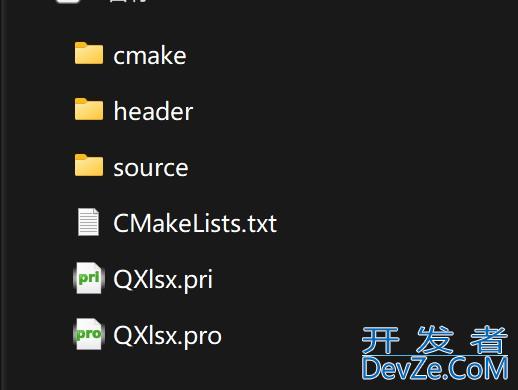Android视图绑定viewBinding的使用介绍
目录
- 在 Activity 中使用 viewBinding
- 在Fragment中使用viewBinding
- 与findViewById的区别
- 与dataBinding的对比
- 替代 KAE
Google 在 android Studio 3.6 Canary 11 及更高版本中提供了一个 viewBinding 的开关,可以开启视图绑定功能,以此来替代 findViewById。
viewBinding功能可按模块启用。要在某个模块中启用viewBinding,请将 viewBinding 元素添加到其 build.gradle 文件中,如下例所示:
android {
... viewBinding { enabled = true }}
如果您希望在生成绑定类时忽略某个布局文件,请将 tools:viewBindingIgnore="true" 属性添加到相应布局文件的根视图中:
<LinearLayout
...
tools:viewBindingIgnore="true" >
...
</LinearLayout>
为某个模块启用视图绑定功能后,系统会为该模块中包含的每个 XML 布局文件生成一个绑定类。每个绑定类均包含对根View以及具有 ID 的所有View的引用。系统会通过以下方式生成绑定类的名称:将 XML 文件的名称转换为驼峰式大小写,并在末尾添加“Binding”。
例如,假设某个布局文件的名称为 result_profile.xml:
<LinearLayout ... >
<TextView android:id="@+id/name" />
<ImageView android:cropToPadding="true" />
<Button android:id="@+id/button"
android:background="@drawable/rounded_button" />
</LinearLayout>
所生成的绑定类的名称就为 ResultProfileBinding。此类具有两个字段:一个是名为 name 的 Tex编程tView,另一个是名为 button 的 Button。该布局中的 ImageView 没有 ID,因此绑定类中不存在对它的引用。
每个绑定类还包含一个 getRoot() 方法,用于为相应布局文件的根View提供直接引用。在此示例中,ResultProfileBinding 类中的 getRoot() 方法会返回 LinearLayout 根视图。
在 Activity 中使用 viewBinding
如需设置绑定类的实例以供 Activity 使用,请在 Activity 的 onCreate() 方法中执行以下步骤:
- 调用生成的绑定类中包含的静态
inflate()方法。此操作会创建该绑定类的实例以供 Activity 使用。 - 通过调用
getRoot()方法或使用 Kotlin 属性语法获取对根View的引用。 - 将根视图传递到
setContentView(),使其成为屏幕上的活动View。
private lateinit var binding: ResultProfileBinding
override fun onCreate(savedInstanceState: Bundle) {
super.onCreate(savedInstanceState)
binding = ResultProfileBinding.inflate(layoutInflater)
val view = binding.root
setContentView(view)
}
然后即可使用该绑定类的实例来引用任何View控件:
binding.name.text = viewModel.name
binding.button.setOnClickListener { viewModel.userClicked() }
在Fragment中使用viewBinding
如需设置绑定类的实例以供 Fragment 使用,请在 Fragment 的 onCreateView() 方法中执行以下步骤:
- 调用生成的http://www.devze.com绑定类中包含的静态 www.devze.com
inf开发者_C教程late()方法。此操作会创建该绑定类的实例以供 Fragment 使用。 - 通过调用
ge编程tRoot()方法或使用 Kotlin 属性语法获取对根View的引用。 - 从
onCreateView()方法返回根View,使其成为屏幕上的活动View。
private var _binding: ResultProfileBinding? = null
// This property is only valid between onCreateView and onDestroyView.
private val binding get() = _binding!!
override fun onCreateView(
inflater: LayoutInflater,
container: ViewGroup?,
savedInstanceState: Bundle?
): View? {
_binding = ResultProfileBinding.inflate(inflater, container, false)
val view = binding.root
return view
}
override fun onDestroyView() {
super.onDestroyView()
_binding = null
}
然后即可使用该绑定类的实例来引用任何View控件:
binding.name.text = viewModel.name
binding.button.setOnClickListener { viewModel.userClicked() }
注意:inflate() 方法会要求传入LayoutInflater对象。如果布局已经inflated,则可以调用绑定类的静态 bind() 方法。 例如:
/**
* View Binding example with a fragment that uses the alternate constructor for inflation and
* [onViewCreated] for binding.
*/
class BindFragment : Fragment(R.layout.fragment_blank) {
// Scoped to the lifecycle of the fragment's view (between onCreateView and onDestroyView)
private var fragmentBlankBinding: FragmentBlankBinding? = null
override fun onViewCreated(view: View, savedInstanceState: Bundle?) {
super.onViewCreated(view, savedInstanceState)
val binding = FragmentBlankBinding.bind(view)
fragmentBlankBinding = binding
binding.textViewFragment.text = getString(string.hello_from_vb_bindfragment)
}
override fun onDestroyView() {
// Consider not storing the binding instance in a field, if not needed.
fragmentBlankBinding = null
super.onDestroyView()
}
}
注意:Fragment 的存在时间比其视图长。请务必在 Fragment 的 onDestroyView() 方法中清除对绑定类实例的所有引用。
与findViewById的区别
与使用 findViewById 相比,viewBinding具有一些很显著的优点:
- Null 安全:由于viewBinding会创建对View的直接引用,因此不存在因View ID 无效而引发空指针异常的风险。此外,如果View仅出现在布局的某些配置中,则绑定类中包含其引用的字段会使用
@Nullable标记。 - 类型安全:每个绑定类中的字段均具有与它们在 XML 文件中引用的View相匹配的类型。这意味着不存在发生类转换异常的风险。
这些差异意味着布局和代码之间的不兼容将会导致构建在编译时(而非运行时)失败。
与dataBinding的对比
viewBinding和dataBinding 均会生成可用于直接引用视图的绑定类。但是,viewBinding旨在处理更简单的用例,与dataBindin编程客栈g 相比,具有以下优势:
- 更快的编译速度:viewBinding不需要处理注解,因此编译时间更短。
- 易于使用:viewBinding不需要特别标记的 XML 布局文件,因此在应用中采用速度更快。在模块中启用viewBinding后,它会自动应用于该模块的所有布局。
反过来,与 dataBinding 相比,viewBinding 也具有以下限制:
- viewBinding不支持布局变量或布局表达式,因此不能用于直接在 XML 布局文件中声明动态界面内容。
- viewBinding不支持双向数据绑定。
替代 KAE
viewBinding 还有一个重要作用是替代以前的 Kotlin Android Extensions,在之前的kotlin版本中提供了一个针对android的扩展插件,它可以允许我们直接用布局文件中的 view id 来访问 view,也无需写 findViewById。
但是由于 KAE 存在一些潜在的 bug (例如可以访问到不属于当前Activity布局的view id造成空指针异常等), 从 Kotlin 1.7 开始,KAE被正式移除了。
那么 viewBinding 的出现也是为了弥补之前 KAE 的功能和缺陷。
最后,viewBinding 只是针对传统 View 体系的开发,在进入 Jetpack Compose 的世界以后,这项功能就基本无用武之地了。
到此这篇关于Android视图绑定viewBinding的使用介绍的文章就介绍到这了,更多相关Android viewBinding内容请搜索我们以前的文章或继续浏览下面的相关文章希望大家以后多多支持我们!






 加载中,请稍侯......
加载中,请稍侯......
精彩评论